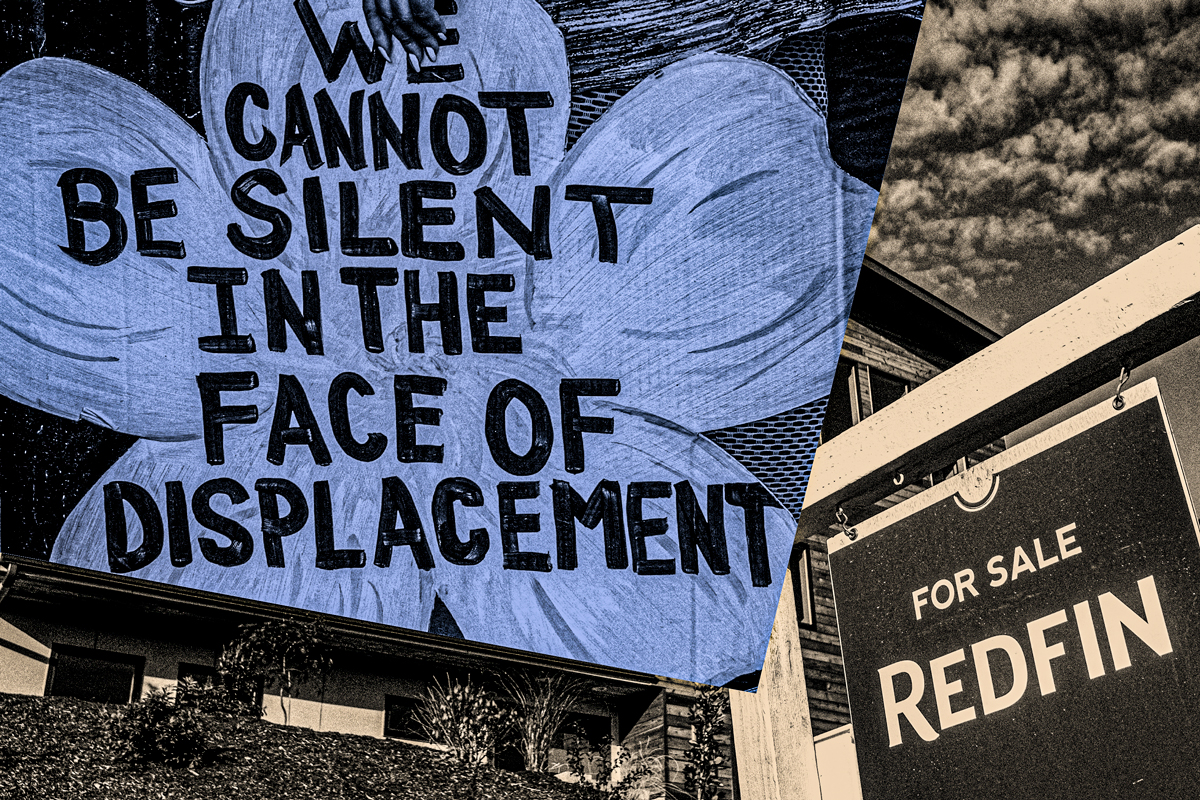Whether you rent your home or are looking to purchase one, you have likely noticed that prices are through the roof. Data from the Consumer Price Index (CPI) for June has disclosed a year-over-year 9.1 percent surge in inflation—the highest monthly spike since 1981—and stressed skyrocketing rent as a key force behind the increase. Similarly, a recent report for Redfin, one of the nation’s leading real estate firms, shows that median rents are up 15 percent year over year—20 percent higher than they were in May 2020, two months into the COVID-19 pandemic. While recent evidence indicates that the housing market might be cooling off in light of the Federal Reserve’s successive interest rate hikes, the rental market is showing no such signs—a trend sure to keep stretching the pockets of renters, a disproportionate number of whom are people of color. What explains this sharp rise in housing prices, particularly for renters, who are grappling with more rapid rent hikes than they’ve ever seen before? And more important, what, if anything, is the Fed doing to mitigate housing price inflation, which comprises a third of the CPI?
The short answer to the latter question is “not much.” The Fed has relied almost exclusively on interest rate increases in its battle against rampant inflation. Fed officials hope that a spike in the cost of money will dampen credit access—slowing economic expansion in the process—and curb demand for labor and, with it, wages. According to the Fed’s logic, lower wages will mean fewer dollars in people’s pockets, resulting in decreased demand for consumer goods. This curbing of demand—assuming the supply side of the market, at minimum, holds steady—means that supply and demand will be “closer together,” which in Fedspeak means that inflation will be brought to heel.
It’s often misleading to speak of tightened markets for the commodity of shelter as a housing affordability “crisis”—in reality, unaffordability is a feature rather than a bug of the system.
Whether this strategy will work on its own terms remains to be seen. But one thing is already clear: the focus on credit access and wage deflation is poised to make things worse for working Americans already struggling to make ends meet. This is especially true in the rental market: the Fed’s decision to raise interest rates does little, if anything, to grapple with the one thing that all Americans need to survive, no matter their economic situation: shelter.
As the new CPI numbers starkly remind us, the housing market is one of the leading drivers of inflation—and for structural reasons, it responds differently than most of the economy to inflation-taming measures such as interest-rate hikes. This becomes especially clear once we separate out the housing sector—which, broadly speaking, refers to those looking to purchase a home—and focus more closely on the rental market.
To begin with, the Fed’s decision to raise interest rates will put homeownership out of reach for many Americans, given that higher interest rates typically translate into higher mortgage rates. While some short-term downward convulsions in the real-estate sector may occur, in general, housing supply remains woefully low. This stubborn shortage has led many analysts to caution against believing that housing prices will drop significantly, if at all, in the near future. For renters, this is terrible news—it means that real property is likely to appreciate in value, which will both drive up rents and keep more Americans confined within the overheated rental market.
The chain of causation here may not be altogether straightforward, but for renters it’s painful—and well-nigh inescapable. If many Americans are choosing to hold off on purchasing a home due to an increase in mortgage rates, then competition for rental housing will increase—at a time when it’s already quite fierce, and economically draining. In many cities, the rental market is even tighter than the housing market—a trend that will only accelerate in a mortgage downturn.
What’s more, the would-be homeowners who’d be seeking short-term refuge in rental homes typically can afford to pay more than most renters; this means that anyone on the margins already struggling to pay rent will likely be spending a more significant share of their income on rent—or, worse, may become displaced and unhoused. This downward spiral will gain further momentum thanks to the Fed’s blanket war on wages—leaving desperate renters with little promise of regaining their footing in a market starkly segmented by income inequality.
The stock response among classical economists to such trends is that the market will eventually self-correct, as high costs dampen overall demand, which will in turn bring prices down closer to earth. But such placid market forecasts fail to answer why an imbalance exists in the first place. Other political economies treat housing as a social good, and set aside public resources to ensure broad access to affordable shelter. But in America’s capitalist market economy, housing is first and foremost a commodity. In other words, it’s often misleading to speak of tightened markets for the commodity of shelter as a housing affordability “crisis”—in reality, unaffordability is a feature rather than a bug of the system, given that housing is allocated based upon one’s ability to pay rather than need. In addition, the market for housing is thronged with many stakeholders who stand to benefit from rising housing prices—real-estate firms, homeowners, and municipal governments, to name a few. For all these market players, artificial housing scarcity is a good thing. But what about the people who do not fall into one of these three camps? How do they navigate inflation, particularly in rental markets?
Housing disparities are too integral to too many top-heavy metro real estate economies for them to get serious attention, let alone policy interventions.
Here, too, the answer is short, and anything but sweet: many Americans simply cannot navigate a rental market currently experiencing rapid inflation. Although recent data show that inflation is outpacing wage growth by a significant margin (meaning that many people’s wages have effectively declined during the pandemic), the Fed remains steadfast in its commitment to interest rate increases. Present policies are targeting a rough 3.5 percent cumulative hike by the end of the year, with the potential for higher rate targets in the wake of the June CPI report. In the real economy, this means that more Americans will find themselves with even less money in their pocket as rental prices continue to spiral upward. The social and political fallout from this cost-of-living squeeze is already starting to reverberate across the country.
Economists and political observers tend to talk about “the economy” in highly technical terms, treating Americans as simply inputs in a statistical model—so in times like this, we do well to stress the real pain and suffering entailed in the continued escalation of rental costs. A “hot” rental market might pay dividends to real estate firms such as Redfin, which made out like a bandit during the pandemic, generating massive profits in the process. But for many working-class Americans, rent increases over the same period—now supercharged by labor-and-wage soaking Fed policies—will be disastrous. This is especially true for places like New York, Oakland, and Washington, D.C.—key metro areas where rents have risen the most sharply and where Black people, due to the socioeconomic legacies of racism, are overrepresented in the working-class populations least able to pay exorbitant rents. And given that the public housing stock in this country is tepid at best—due in no small part to the real-estate industry’s aggressive lobbying against it—homelessness in major metropolitan areas is likely to grow; indeed, that’s already the clear trend in many urban rental markets. We should also remember that growing housing insecurity leads to more crime—an underlying socioeconomic dynamic that fear-mongers in the professional political class are seldom inclined to acknowledge. The policy consensus on any threatened increase in crime is to fall back on racist hyper-policing strategies that do little to nothing to address the root causes of crime.
Housing disparities are too integral to too many top-heavy metro real estate economies for them to get serious attention, let alone policy interventions. The resulting market shakeout for under-resourced and nonwhite Americans is all too familiar: in most economic downturns under capitalism, people of color—Black people, in particular—are likely to find themselves getting the short end of the stick.
Many economists rightly acknowledge that conditions in the current U.S. economy are notoriously hard to forecast, amid the “new normal” wrought by the ongoing Covid pandemic. But one clear lesson of rental price inflation is that the more things change, the more things stay the same. Even though we are living through what is in many ways an unrepresentative economic moment, the structural truth of the matter is that the poor and working classes are the ones being forced to foot the bill on behalf of far-better advantaged political and economic elites.
Jared Clemons received his Ph.D. in political science from Duke University, where he studied race and political economy. He is a postdoctoral research fellow at Princeton University’s Center for the Study of Democratic Politics.



